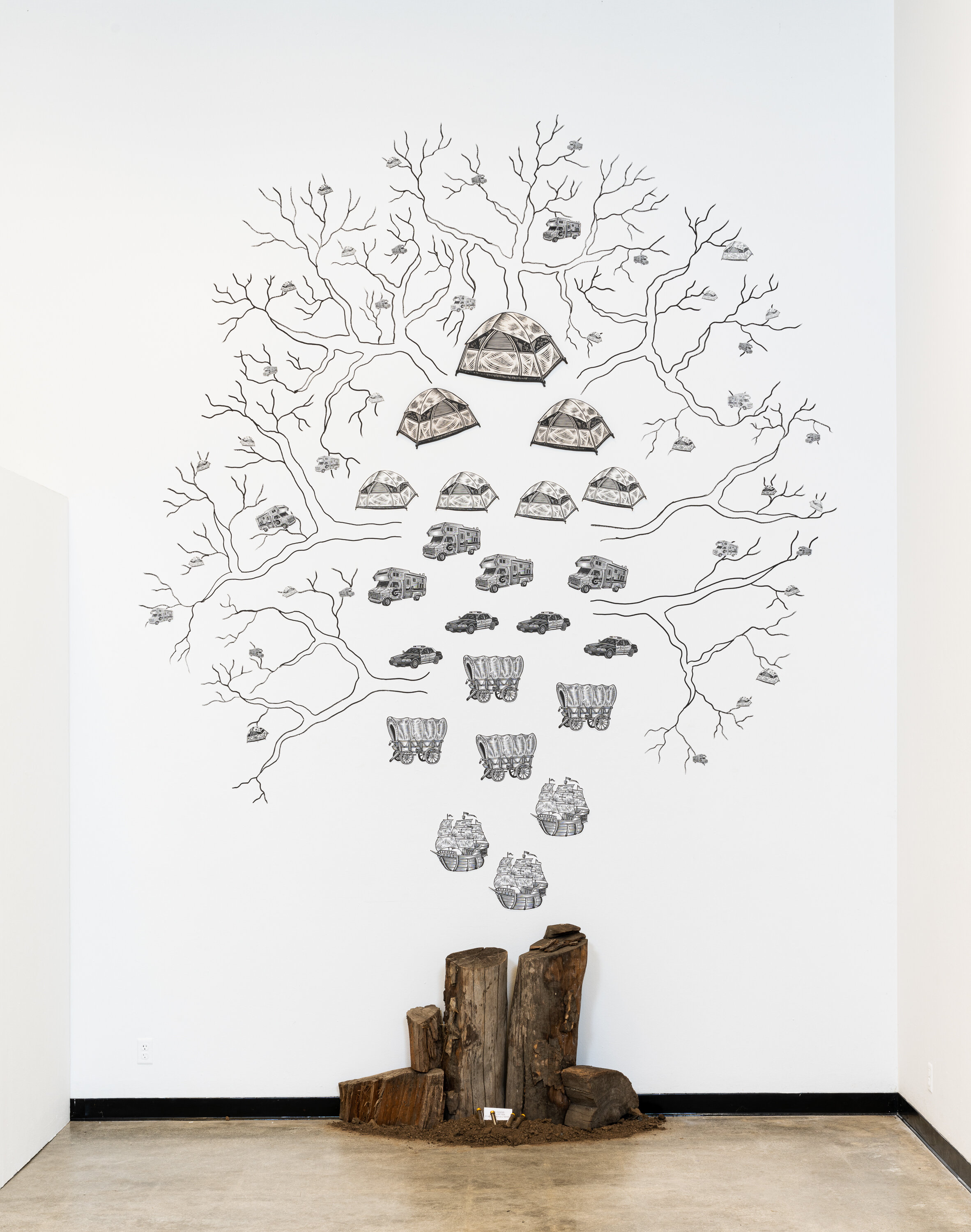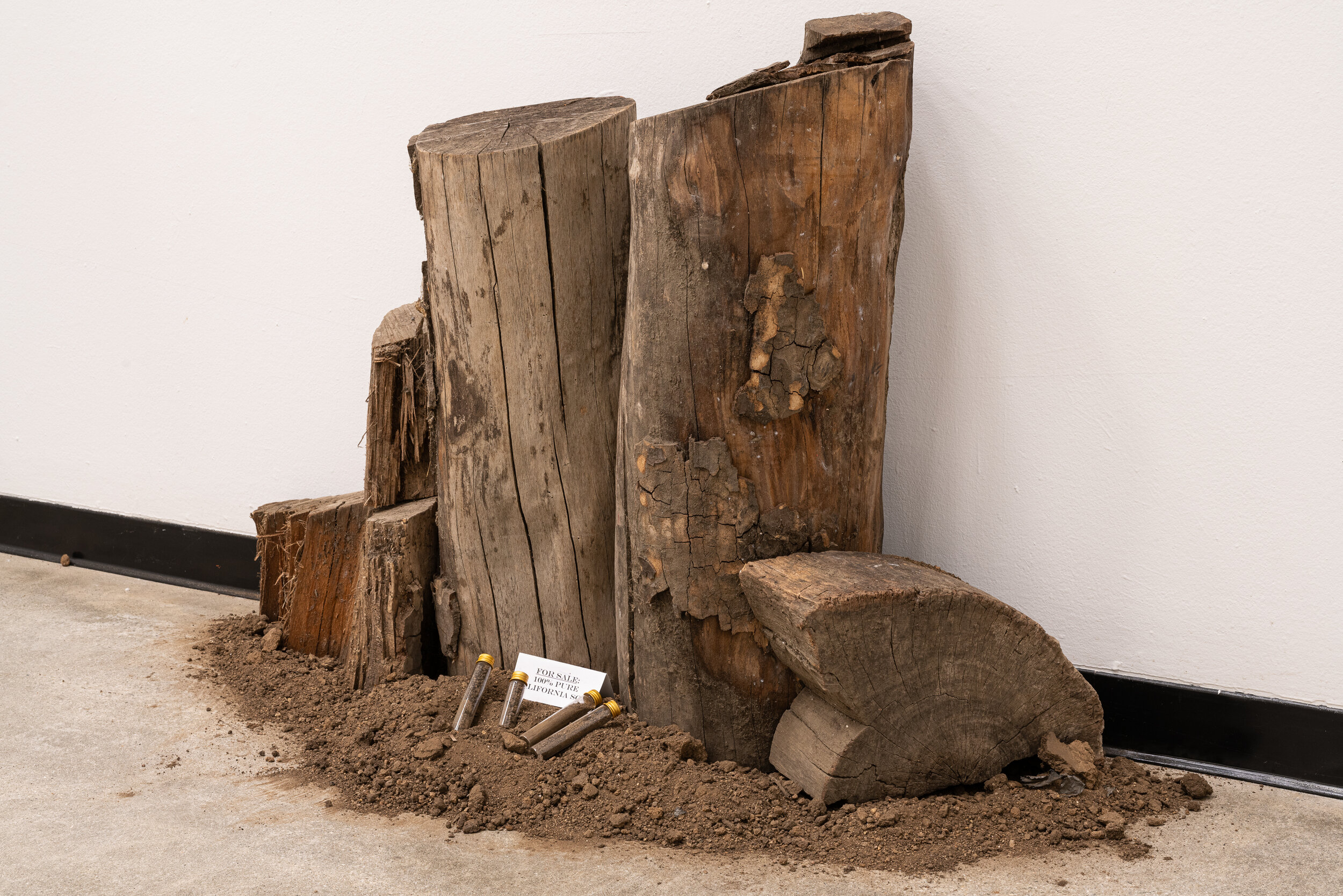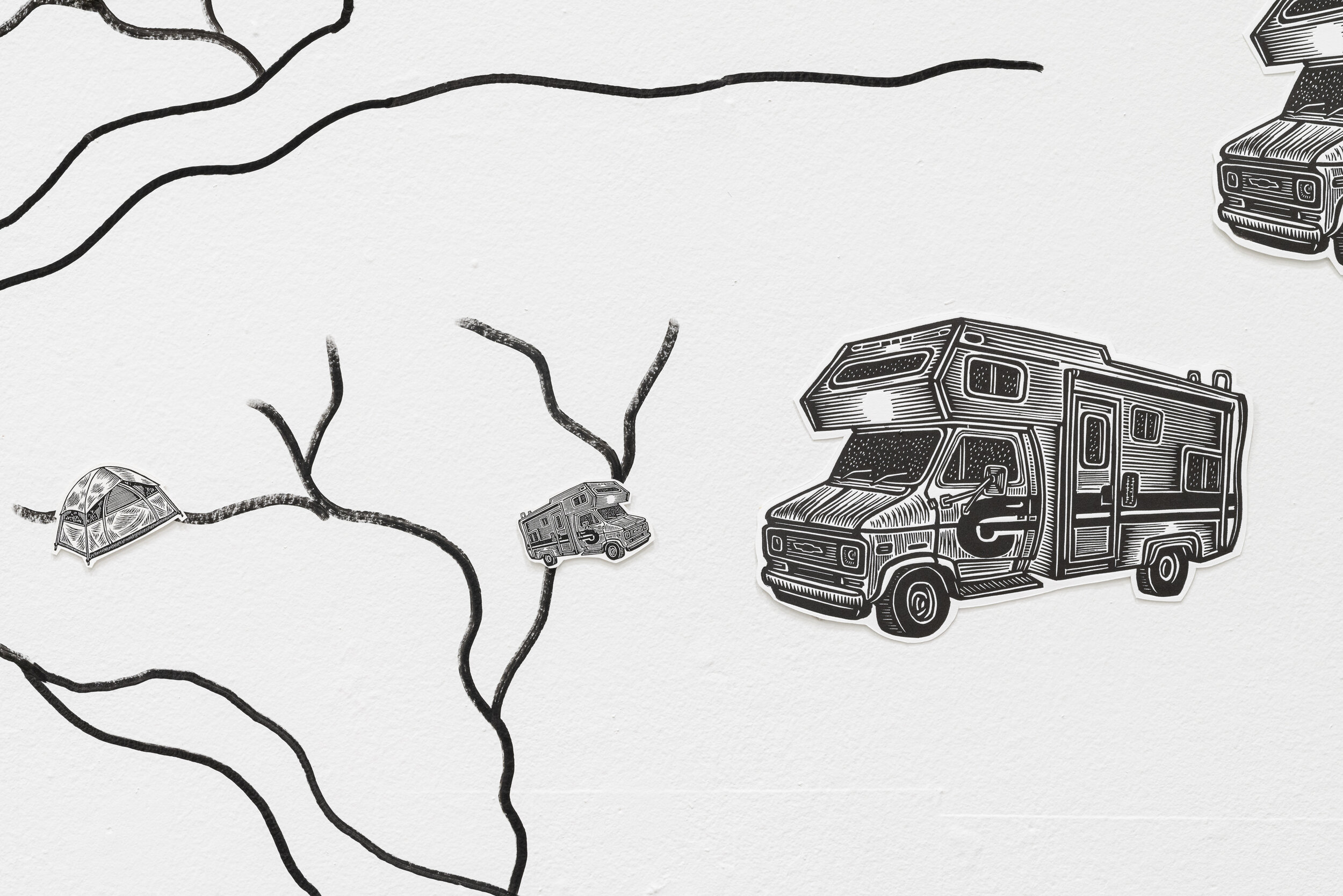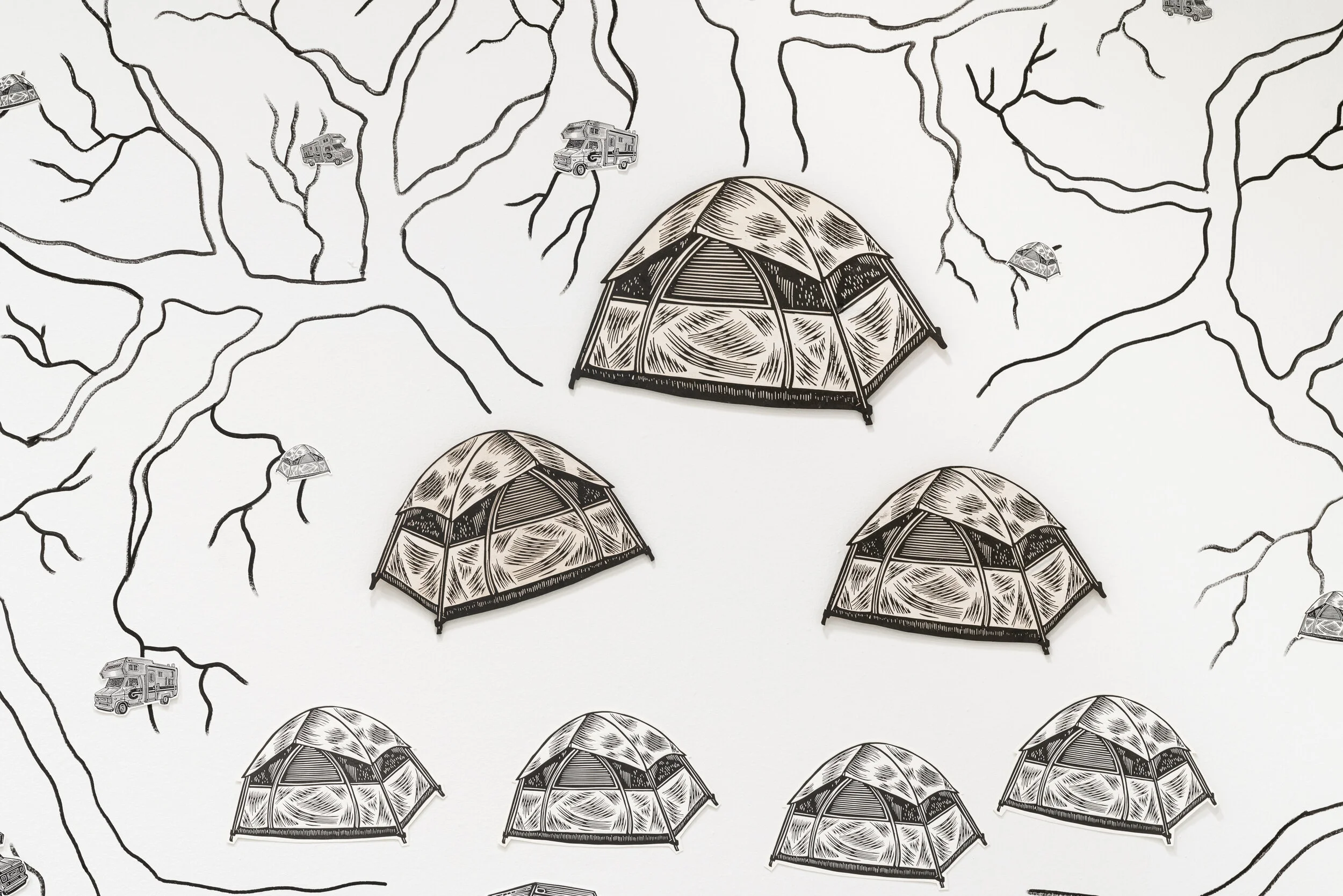The Eagle Tree is a Witness
(site-specific installation for Legend and Legacy: José Guadalupe Posada and Contemporary Latinx Art, at CSU Dominguez Hills)
The Eagle Tree, the remnants of which can be found in what we now call the city of Compton, California, has witnessed centuries of development and overlapping historical periods. Once used as a boundary marker separating Rancho San Pedro and Rancho Los Cerritos, the tree existed prior to the arrival of Spanish colonizers and their attempted erasure of the Tongva and Acjachemen peoples in the LA basin.
Sections of the actual Eagle Tree have been integrated into this print-based installation (located at the base of the piece), along with soil, linocut and screen-prints, and paint. This art piece serves as an attempt to reference this history, in order to make trans-historical linkages across time between the periods of colonialism (Spanish colonization), settler colonialism (US annexation), and racialized policing (in the past 100 years). These overlapping social phenomena serve as a context for understanding current problems with homelessness and gentrification, since at the root of these issues lies the privatization of land. If you don’t own land, under our current economic model, you are vulnerable to being moved and pushed, but, how can the Earth and the land be a commodity for profit? Who benefits, and who is affected most?
Prior to Spanish arrival in the LA basin, indigenous people had no concept of private land as a commodity, and instead lived in a reciprocal relationship with the land; each providing for the other. The ghost of the Eagle Tree is a testament to this, and reminds us that another world is possible. If the fruit of colonialism is homelessness and precarity, then understanding its legacies in shaping our current reality is part of building the world we want to live in.

"The Eagle Tree is a Witness," linocut, linocut-based serigraphy, acrylic, historical lumber, soil, glass vials, 2020. 22x12 feet.

Detail of "The Eagle Tree is a Witness."

Detail of "The Eagle Tree is a Witness."

Detail of "The Eagle Tree is a Witness."

Detail of "The Eagle Tree is a Witness."

Detail of "The Eagle Tree is a Witness."